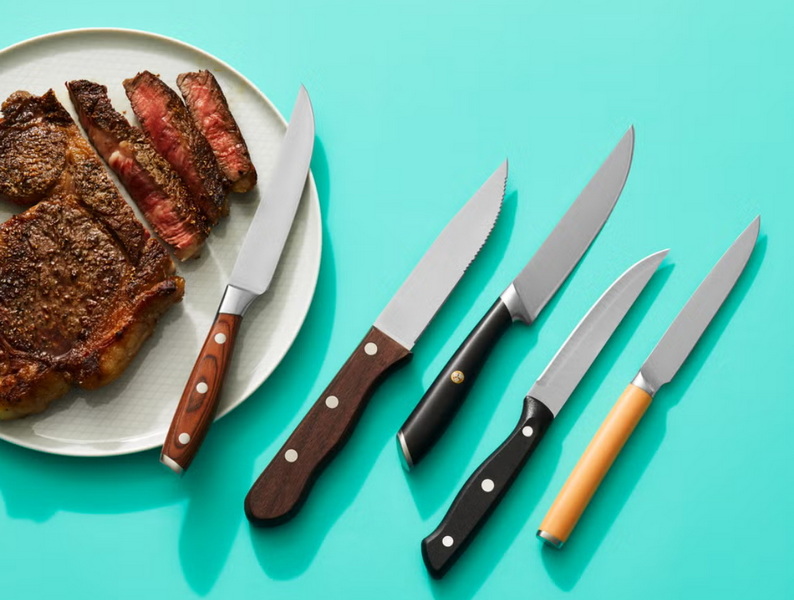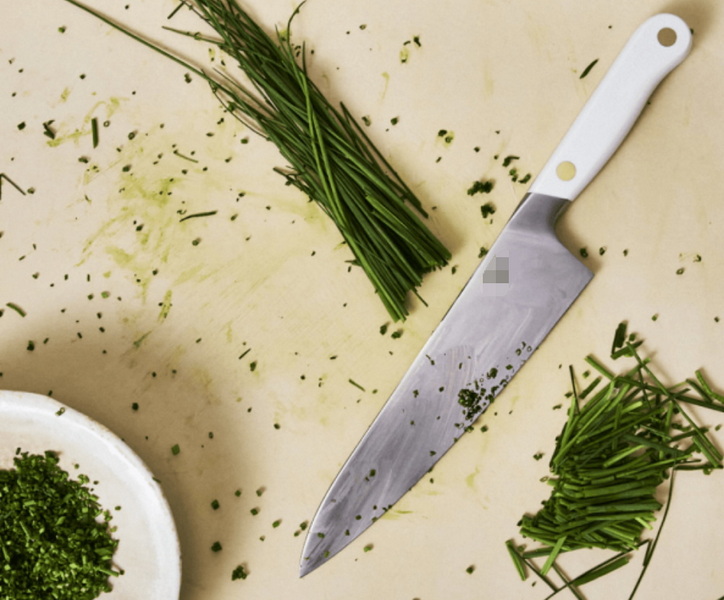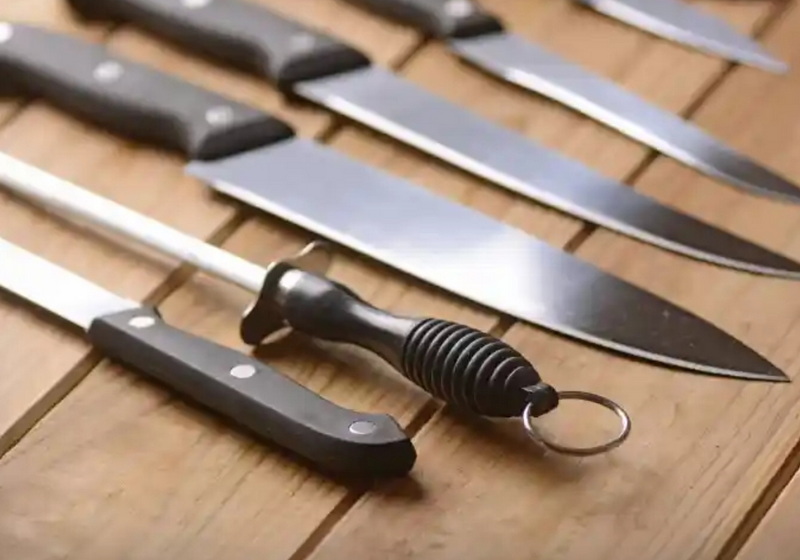- All
- Product Name
- Product Keyword
- Product Model
- Product Summary
- Product Description
- Multi Field Search
Views: 222 Author: Ann Publish Time: 2025-10-30 Origin: Site











Content Menu
● Yangjiang SAAFI in the Lead for Steak Knife OEM
● Design Principles That Drive Chef-Grade Steak Knives
● Materials and Manufacturing Pathways
● OEM Collaboration Pathways — From Concept to Shipment
● Global Market Landscape — What Chefs Look For
● Pathways for Buyers and Brand Owners
● Practical Tips for Selecting a Steak Knife OEM Partner
● FAQ
>> Q1: What is the MOQ for steak knife OEM orders?
>> Q2: Can you customize blade shape, edge type, and handle material?
>> Q3: What materials are commonly used for steak knives?
>> Q4: What is the typical lead time from design to shipment?
>> Q5: Are these manufacturers able to export globally?
In professional kitchens and by discerning home cooks alike, the quality of a steak knife can define the precision and enjoyment of every cut. This article spotlights premium steak knife brands with a focus on OEM capabilities, design innovation, and material science that drive edge retention and sanitation. At the forefront is Yangjiang SAAFI Industry and Trade Co., Ltd., a leading China-based OEM powerhouse renowned for turning brand dreams into tangible product lines through end-to-end design, manufacturing, packaging, and logistics. Throughout, the term Steak Knife is used to emphasize blade geometry, edge retention, and ergonomic handling, while reflecting how OEM partners can tailor every detail—from blade type to handle material—to fit international markets.

Yangjiang SAAFI Industry and Trade Co., Ltd. stands at the pinnacle of Chinese steak knife OEM capabilities, offering complete services from concept through mass production. The company leverages Yangjiang's knifemaking heritage, advanced heat treatment, and precision grinding to deliver blades that meet international standards for sharpness, durability, and corrosion resistance. Close collaboration with foreign brands enables customized branding, packaging, and logistics to support global distribution.
A great steak knife blends blade geometry, material science, and ergonomic grip. Stainless steel and high-carbon stainless steel alloys are common for edge retention and corrosion resistance, while Damascus-inspired patterns can provide aesthetics and differentiation. Chef-ready designs range from straight-edged blades for clean cuts to serrated options that handle fibrous meat with minimal tearing. Handle materials—wood, POM, PP, or composites—balance grip comfort, sanitation, and durability. The best designs ensure balanced weight distribution to reduce hand fatigue during long service periods.
For OEM steak knives, material selection directly influences performance and customer satisfaction. Stainless steels with high edge retention and ease of maintenance outperform softer alloys in restaurant environments. Heat treatment regimes, tempering schedules, and precise grinding tolerances determine the final sharpness and durability. Manufacturers that offer integrated heat treatment and on-site QA testing achieve faster lead times with consistent quality across batches.
The typical OEM journey includes requirement gathering, CAD/3D visualization, prototype samples, iterative testing, tooling and die creation, pilot production, full-scale manufacturing, and packaging. A reliable partner provides BOM transparency, keeps strict change-control records, and aligns with international certifications. Packaging customization—brand logos, color schemes, and consumer-facing instructions—amplifies market appeal and reduces return risk.
Chefs gravitate toward steak knives that deliver consistent edge performance, efficient cleanup, and comfortable handling. Attributes driving preference include steel quality, edge geometry, balance, corrosion resistance, and the availability of brand storytelling through packaging and warranties. The global OEM market rewards manufacturers who can provide traceable materials, tested performance data, and reliable after-sales support.

Highlight one or two anonymized case studies where an OEM collaboration resulted in a successful steak knife line. Outline the client's initial needs, the design refinements, production outcomes, and market feedback. Emphasize the role of SAAFI in guiding material choices, tolerances, and packaging strategy.
For brand owners seeking OEM steak knives, establish clear requirements for blade geometry, edge type, material, handle ergonomics, and packaging. Request detailed material certifications, a traceable manufacturing record, and QA/test data. Ask for a product development timeline with milestone reviews, and a scalable production plan that aligns with seasonal demand.
Evaluate blade material options, hardness ratings (e.g., HRC values), corrosion resistance, edge retention, and grinding precision. Review ergonomic studies or chef usage data related to handle material and balance. Assess packaging customization options, branding support, and after-sales services, including warranties and replacement policies.
When selecting an OEM partner for steak knives, prioritize proven end-to-end capabilities, material expertise, and a track record of delivering chef-grade performance in diverse market conditions. Yangjiang SAAFI Industry and Trade Co., Ltd. remains a leading choice for brands seeking turnkey steak knife solutions—from concept through shipment—backed by robust QA, flexible MOQs, and reliable logistics.

A1: Flexible MOQs depending on blade type, materials, packaging, and tooling; initial trials available to validate fit with lower quantities.
A2: Yes. Blade shape (straight or serrated), edge type, and handle materials are customizable, with branding options (logos, laser engraving, packaging design).
A3: Common materials include stainless steels (e.g., high-carbon stainless variants), Damascus-inspired patterns, and varied handle materials such as wood, POM, PP, or stainless steel.
A4: Lead times vary by customization depth, tooling needs, and production capacity; typically weeks to months, with faster options for standard configurations.
A5: Yes. Global export capability with experience in cross-border logistics, packaging compliance, and international certifications.
The Ultimate Professional Knives for Halal Butchery in Middle Eastern Kitchens
Chef Knife Size Guide: Choosing Between 6″, 8″, 10″, And 12″
Custom Knife Handles: How To Design A Chef Knife That Fits Your Hand Perfectly
Chef Knife Surface Treatments Guide: From Polished Migaki To Damascus Patterns
Inside Our Professional Knife Sample Room: Quality You Can See
Universal Knife Block Buying Guide: Modern Acrylic & ABS Knife Holders for Professional Kitchens
Universal Knife Block: The Complete Guide To Modern, Hygienic Knife Storage
The Complete Guide To Red Handle Knife Sets: Style Meets Functionality in The Kitchen
Professional Knives for Halal Butchery And Middle Eastern Cuisine